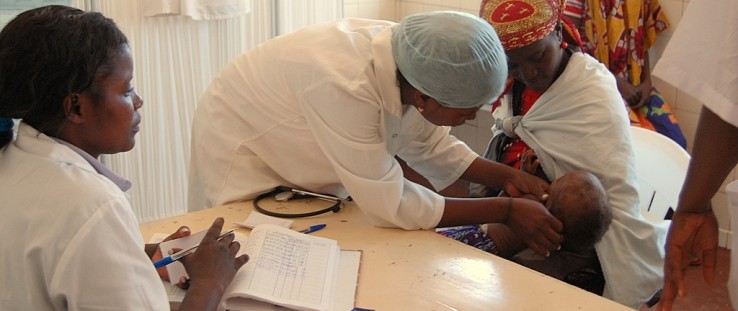 A nurse checks a child in Angola before prescribing antimalarial drugs.
Alison Bird, USAID
A nurse checks a child in Angola before prescribing antimalarial drugs.
Alison Bird, USAID
 A nurse checks a child in Angola before prescribing antimalarial drugs.
Alison Bird, USAID
A nurse checks a child in Angola before prescribing antimalarial drugs.
Alison Bird, USAID
We now think of malaria as a curse of the developing world, but the disease has plagued mankind for millennia.
In the 5th century B.C., Herodotus described using fishing nets at night to protect against biting gnats. Malaria shook the Roman Empire to its foundations. It was known as ague in 16th-century England, when it was so widespread that Shakespeare’s plays shudder with fearful references to it.
In World War II, malaria caused five times as many casualties as did enemy action in the South Pacific.
At least eight U.S. presidents are believed to have contracted malaria during their lifetime, including Washington and Lincoln. Malaria was so prevalent in Washington, D.C., in the late 1800s there was even a short-lived movement to erect a giant screen around the city—a sort of city-wide bed net.
Malaria was eliminated from the United States in the early 1950s thanks to the Centers for Disease Control and Prevention (CDC). But malaria has continued to plague developing nations; one reason stamping out the disease was such an important piece of the Millennium Development Goals (MDGs).
Ten years ago, President George W. Bush announced the creation of a malaria initiative, led by USAID and implemented together with the CDC, to combat the ancient disease that inflicts an intolerable burden of suffering and death, particularly among young children and pregnant women.
At the time, malaria killed more than 1 million people each year, mostly in Africa, and burdened health systems with up to 45 percent of all hospital admissions.
The President’s Malaria Initiative (PMI) began with three focus countries in 2006, expanding deliberately to 15 focus countries in Africa. President Barack Obama then expanded the initiative, and bipartisan congressional leadership has sustained our work. Today, PMI works in 19 countries in sub-Saharan Africa and in the Greater Mekong region in Asia.
Together with partner countries, PMI brings effective tools to the people who need them most—women and children. This includes insecticide-treated mosquito nets, indoor residual spraying of homes with insecticides, accurate diagnosis and prompt treatment, and intermittent preventive treatment for pregnant women.
To date, PMI has procured more than 155 million insecticide-treated nets, more than 174 million rapid diagnostic tests and more than 318 million antimalarial treatments to prevent, diagnose and treat malaria.
This year marks a decade of U.S. leadership in the global fight against malaria through the President’s Malaria Initiative (PMI) and the launch of the PMI Strategy 2015-2020. In May, the World Health Assembly adopted the World Health Organization’s Global Technical Strategy (GTS). The new GTS largely reaffirms the use of proven, cost-effective approaches. Given the success of malaria control efforts over the last decade, it sets new targets that seek to reduce cases and deaths from malaria to very low levels.
The results are incredible. Since 2000, malaria mortality rates have decreased globally by 47 percent and by 54 percent in Africa alone. And since 2001, more than 4 million malaria-related deaths have been averted globally—roughly 95 percent of which are children under 5 in Africa. The majority of this progress has been made in the past decade—after PMI began.
“No public health program funded by the United States Government has had greater impact in such a short period of time as PMI,” said Dr. David Brandling-Bennett, senior malaria adviser with the Bill & Melinda Gates Foundation. “It is hard to think of another program in the federal budget where the correlation between dollars invested and lives saved is so clear.”
For the first time, some African nations are on their way to eliminating malaria, and fewer people on the continent are being infected than ever before. This means healthier children, more vibrant economies and stronger, less burdened health systems.
Particularly in the high-burden malaria countries in Africa, where women and young children bear the greatest load of the disease, malaria control is central to improving child survival and maternal health, eradicating extreme poverty, expanding access to education and ending preventable death. Less malaria means fewer days missed at school and work, more productive communities and stronger economies.
And as the Millennium Development Goals come to an end this year, the new Sustainable Development Goals (SDGs) will drive the agenda in the future.
“Essentially, these new SDG targets cannot be achieved if we do not succeed in eliminating malaria,” said Dr. Fatoumata Nafo-Traoré, executive director of the Roll Back Malaria Partnership. “To do this we will need new tools, more investment both internationally and nationally from endemic countries.”
Because continued progress in the fight against malaria is central to the attainment of the forthcoming SDGs, malaria partners will reach beyond the traditional health sector to include environment, climate change, housing, agriculture, education and others invested in the fight against poverty.
While we celebrate incredible progress, significant challenges remain. This year, malaria will cause over 600,000 deaths—77 percent of which will be among children under 5—or the entire population of Seattle or Milwaukee.
Resistance to malaria medicines in the Mekong region of Asia and widespread insecticide resistance pose significant risks to further progress in malaria control. These challenges have the potential to even reverse the gains that have been achieved to date.
PMI is addressing these challenges by promoting approaches to reduce the spread and intensification of drug and insecticide resistance, including increasing the use of diagnostic testing for malaria to reduce unnecessary drug use, promoting adherence to malaria treatment, and by supporting countries to detect and remove poor quality and counterfeit drugs from the markets.
PMI, along with other key partners, including the Gates Foundation, also support the development of novel classes of malaria treatments and vector control tools through the Medicines for Malaria Venture and the Integrated Vector Control Consortium.
There is growing optimism that malaria in sub-Saharan Africa can be controlled though the tasks ahead are challenging.
Said Dr. Larry Barat, senior malaria adviser with PMI: “Eliminating malaria is certainly the most challenging target in most countries given the intensity of effort required to diagnose, track and react to every malaria case. As the malaria map continues to shrink globally, the remaining areas of malaria transmission will be increasingly more difficult to move towards elimination.”
We are getting much closer to a world without malaria, but the job is far from done. The global community must continue to invest in research and development for new and improved tools to combat this disease, from vaccines to new drugs to more sensitive diagnostics and surveillance systems.
“Our task is to ensure no one should die from this disease, which is largely preventable and easily treatable,” said U.S. Global Malaria Coordinator Tim Ziemer.








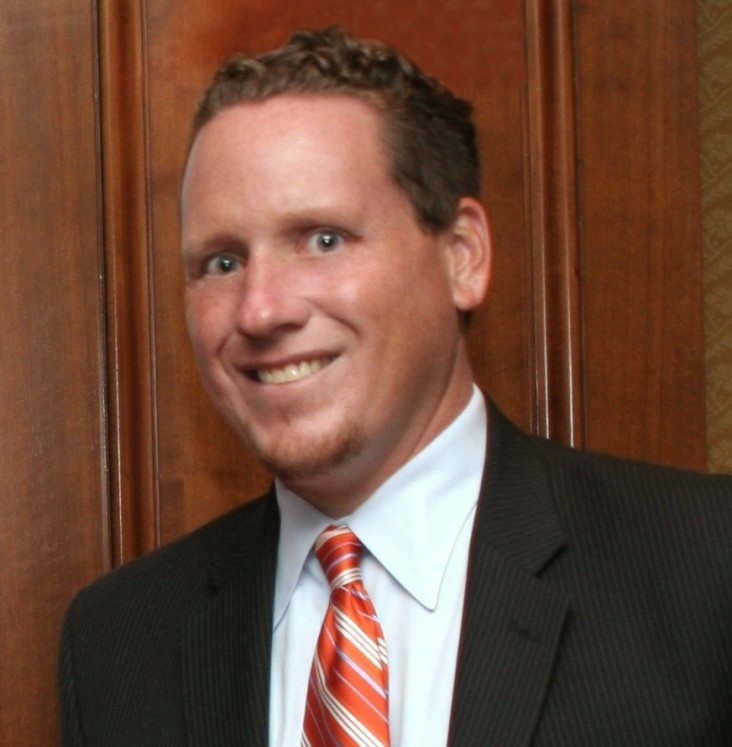
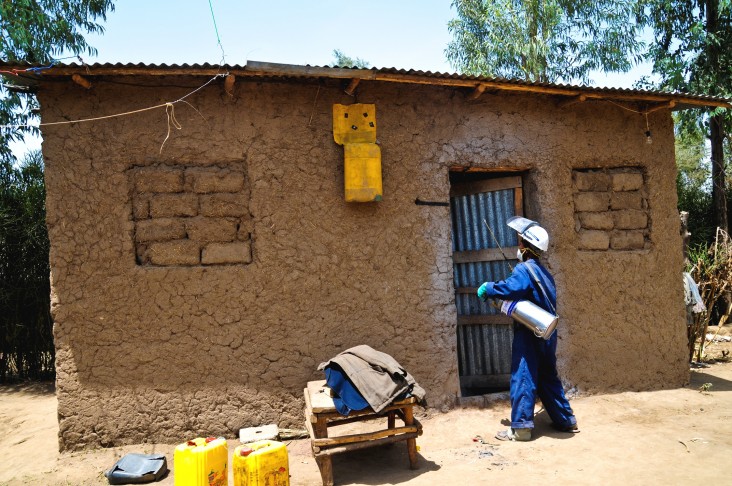
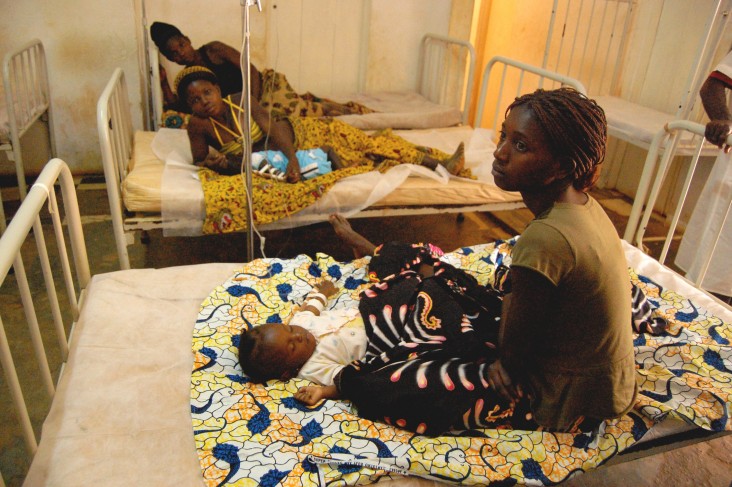
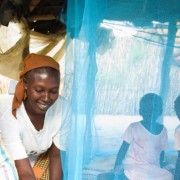
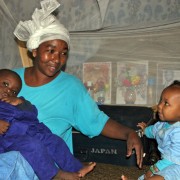
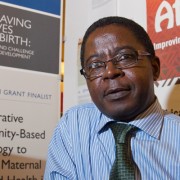
Comment
Make a general inquiry or suggest an improvement.